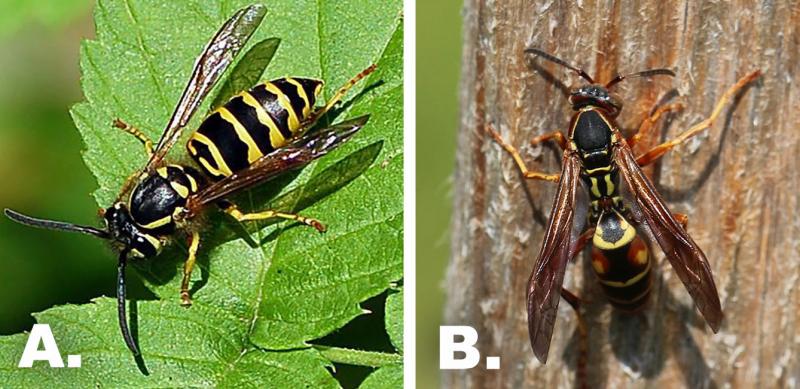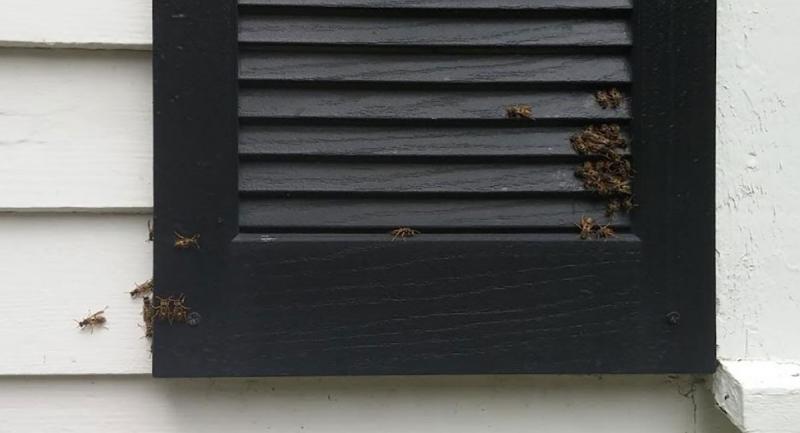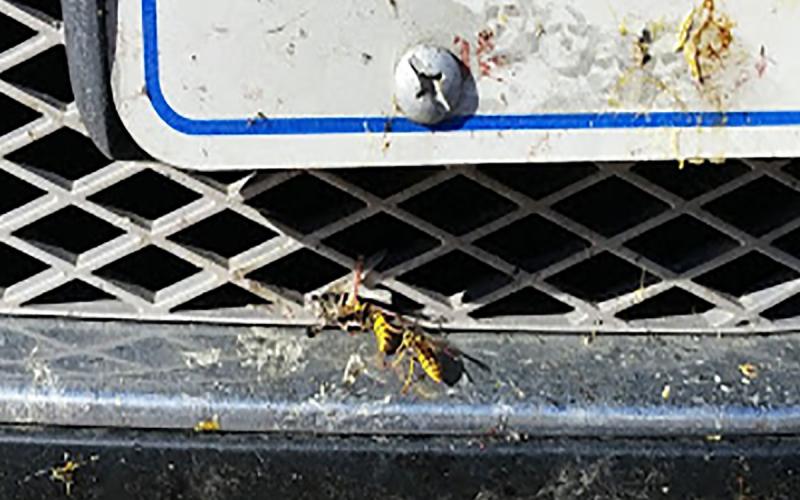
With their distinctive black and yellow stripes and tendency to hang out in groups, wasps receive attention no matter the time of year. As the weather warms up and spring progresses, you may notice more wasp activity in your yard or around your house.
Wasps, such as yellowjackets (Figure 1A) and paper wasps (Figure 1B), have annual nests, so the individuals that are active now are the queens that survived the winter. These fresh out of hibernation queens are looking for a place to begin their new colony.
For solitary wasps, such as mud daubers, females will construct nests after they emerge in the spring and summer.

Annual wasp nests often escape detection for most of the season. These nests start out small and may be hidden. Spring is a great time to monitor where wasp activity is starting so you can manage these nests before they surprise you in late summer. Soffits, eaves, shutters, down spouts and other voids on the exterior of a home or garage are all potential places for wasps to build their nests (Figure 2).
Management
Managing wasps is best done in the spring when their activity is first noticed. Never seal up a void or opening that contains live wasps or an active nest, as they may chew their way out and end up inside the affected structure. Wasp control should be attempted only with great care and preparation.

If applying an insecticide to an active nest, choose a time with cooler temperatures as the wasps will be more sluggish. Wasps have difficulty seeing in the dark, so spraying the nest at night may further reduce their aggressive behavior.
Not every wasp nest has to be controlled. Wasps are actually considered beneficial insects because they contribute to pollination and hunt or scavenge for other insects to feed their young (Figure 3). If they are nesting in an out of the way location, consider allowing them to stay as they can provide benefits around the garden.


